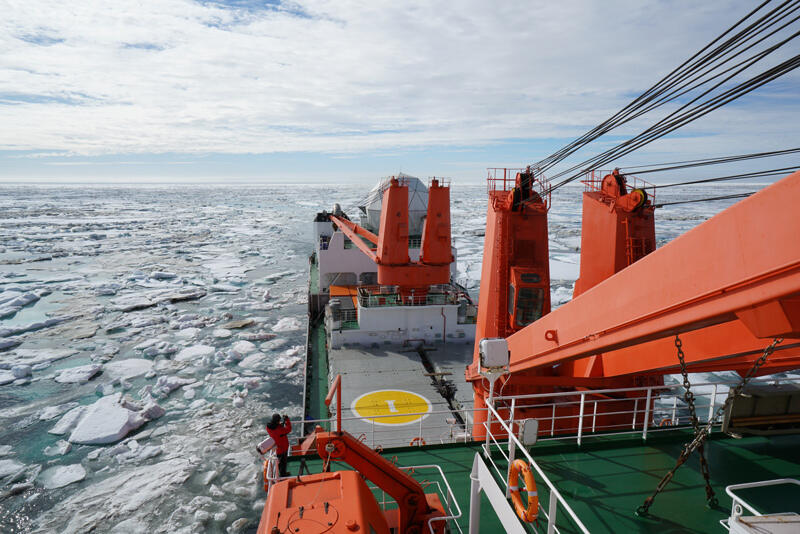2022-09-29 カリフォルニア大学バークレー校(UCB)
 Plastics made from polyethylene (white strands), such as the milk bottle shown in background, can now be broken down into smaller molecules — propylene — that are valuable for making another type of plastic, polypropylene. Click image for more detailed caption. (Graphic credit: Brandon Bloomer, UC Berkeley)
Plastics made from polyethylene (white strands), such as the milk bottle shown in background, can now be broken down into smaller molecules — propylene — that are valuable for making another type of plastic, polypropylene. Click image for more detailed caption. (Graphic credit: Brandon Bloomer, UC Berkeley)
開発されたプロセスは、触媒を使って長いポリエチレン(PE)ポリマーを均一な塊(炭素数3のプロピレン)に分解し、ポリプロピレンなど他の種類の高価値プラスチックを作るための原料にするものである。
ポリエチレンの鎖を切断するこれまでの方法は、高温を必要とし、需要の少ない成分の混合物を得ることができた。この新しいプロセスは、化石燃料によるプロピレン生産の必要性を低減するだけでなく、プラスチック産業が現在満たされていないプロピレンの需要も満たすことができる。
炭化水素のポリエチレンは、通常、1,000個のエチレン分子(1個のエチレンは2個の炭素原子と4個の水素原子からなる)のポリマー鎖として生成されるが、その反応性のなさが課題であった。
ポリエチレンの2つの炭素-水素結合を触媒で切断し、最初はイリジウム触媒、後に白金-錫触媒と白金-亜鉛触媒を用いて、反応性の炭素-炭素二重結合を作り、この炭素-水素結合の弱点を利用して、エチレンと、さらに2種類の触媒を反応させることで、ポリマー鎖を解きほぐすことができたのだ。
炭素-炭素単結合の飽和炭化水素から、数分子の水素を取り除き、炭素-炭素単結合よりも反応性の高い炭素-炭素二重結合を作る。
オレフィンメタセシスと呼ばれる反応をエチレンと行い、炭素-炭素二重結合を開裂させるのです。これで、長鎖のポリマーが、末端に炭素-炭素二重結合を持つ小さな断片に分解されたことになる。
パラジウム製の第2の触媒を加えることで、プロピレン分子(炭素数3の分子)を反応性末端から繰り返し切り離すことができた。その結果、ポリエチレンの8割がプロピレンに還元された。
末端に炭素-炭素二重結合を持つ長い鎖ができると、この触媒はその炭素-炭素二重結合を取り込んで、炭素を1つだけ異性化させる。
ポリマー全体が炭素数3の断片になるまで切断する。鎖の一方の端から、鎖がなくなるまで噛み砕き、プロピレン類を吐き出す。
この反応は、可溶性触媒、すなわち「均一系」触媒を用いて、液体溶液中で行われた。
研究グループは、このプロセスが半透明の牛乳瓶、不透明なシャンプーボトル、PEパッケージ、アルミ缶4本パックに使われている硬い黒色プラスチックトップなど、さまざまなPEプラスチックに有効であることを実証した。着色料を除去するだけで、すべて効率的にプロピレンに還元することができた。
<関連情報>
- https://news.berkeley.edu/2022/09/29/process-converts-polyethylene-bags-plastics-to-polymer-building-blocks/
- https://www.science.org/doi/10.1126/science.add1088
エチレンを用いた廃ポリエチレンの触媒による分解とプロピレンへの変換 Catalytic deconstruction of waste polyethylene with ethylene to form propylene
Richard J. Conk,Steven Hanna,Jake X. Shi,Ji Yang,Nicodemo R. Ciccia,Liang Qi,Brandon J. Bloomer,Steffen Heuvel,Tyler Wills,Ji Su,Alexis T. Bell,John F. Hartwig
Science Published:29 Sep 2022
DOI: 10.1126/science.add1088
Making propylene from polyethylene
Polyolefins are the most abundantly produced plastics but are unfortunately also among the hardest to break back down into their building blocks. Conk et al. developed a preliminary method to produce propylene from a sequence of reactions between waste polyethylene and fresh ethylene. Specifically, the process involves a small extent of desaturation of each polyethylene chain by a dehydrogenation catalyst, followed by steady breakdown of the chains into propylene through catalytic isomerization and metathesis reactions with ethylene. Subject to cost and process optimization, the method shows promise for generating a valuable feedstock chemical from waste plastic. —JSY
Abstract
The conversion of polyolefins to monomers would create a valuable carbon feedstock from the largest fraction of waste plastic. However, breakdown of the main chains in these polymers requires the cleavage of carbon–carbon bonds that tend to resist selective chemical transformations. Here, we report the production of propylene by partial dehydrogenation of polyethylene and tandem isomerizing ethenolysis of the desaturated chain. Dehydrogenation of high-density polyethylene with either an iridium-pincer complex or platinum/zinc supported on silica as catalysts yielded dehydrogenated material containing up to 3.2% internal olefins; the combination of a second-generation Hoveyda-Grubbs metathesis catalyst and [PdP(tBu)3(μ-Br)]2 as an isomerization catalyst selectively degraded this unsaturated polymer to propylene in yields exceeding 80%. These results show promise for the application of mild catalysis to deconstruct otherwise stable polyolefins.



